The Developmental Trajectory of a Decade of Research on Mental Health and Well-Being amongst Graduate Students: A Bibliometric Analysis
Abstract
:1. Introduction
- Map the trajectory of research on graduate students’ mental health and well-being on an international scale;
- Analyze the knowledge structure in terms of publications’ co-authorship and organizational and journal sources; and
- Establish the existing research thematic areas, hotspots, and gaps (areas that have received inadequate attention).
2. Conceptual Framework
3. Methods
3.1. Search Strategies
“mental health and well-being” OR “psychological well-being” AND “PhD students” OR “Graduate students” OR “post-doctoral students” AND “(LIMIT-TO (PUBYEAR, 2021) OR LIMIT-TO (PUBYEAR, 2020) OR LIMIT-TO (PUBYEAR, 2019) OR LIMIT-TO (PUBYEAR, 2018) OR LIMIT-TO (PUBYEAR, 2017) OR LIMIT-TO (PUBYEAR, 2016) OR LIMIT-TO (PUBYEAR, 2015) OR LIMIT-TO (PUBYEAR, 2014) OR LIMIT-TO (PUBYEAR, 2013) OR LIMIT-TO (PUBYEAR, 2012)) AND (LIMIT-TO (OA, “all”)) AND (LIMIT-TO (LANGUAGE, “English”))”
3.2. Inclusion and Exclusion Criteria
3.3. Method of Analysis and Software
4. Findings and Discussion
4.1. The Development Trajectory of Studies on Graduate Students’ Mental Health and Well-Being
4.2. Geographical Distribution
4.3. Distribution Source-Wise
4.4. Country-Wise Collaboration
4.5. Distribution by Discipline Area
4.6. Organization Affiliation
4.7. Main Subject Word Analysis
4.8. Analysis of Keywords
4.9. Major Highlights of the Five Identified Clusters
4.10. Citation Analysis of Documents
5. Conclusions
- Study contributions
- Study limitations
- Future research
Author Contributions
Funding
Institutional Review Board Statement
Informed Consent Statement
Data Availability Statement
Conflicts of Interest
References
- Neves, J.; Hillman, N. Student Academic Experience Survey, York/Oxford: Advance HE/Higher Education Policy Institute. 2018. Available online: https://s3.eu-west-2.amazonaws.com/assets.creode.advancehe-document-manager/documents/advance-he/Adv_SAES_2021_FINAL_1624460313.pdf (accessed on 9 October 2021).
- Gorczynski, P.; Sims-Schouten, W.; Hill, D.; Wilson, J.C. Examining mental health literacy, help-seeking behaviours and mental health outcomes in UK university students. J. Ment. Health Train. Educ. Pract. 2017, 12, 111–120. [Google Scholar] [CrossRef] [Green Version]
- Kadison, R.; Digeronimo, T.F. College of the Overwhelmed: The Campus Mental Health Crisis and What to Do about It; Jossey-Bass: San Francisco, CA, USA, 2004. [Google Scholar]
- Stallman, H.M. Prevalence of psychological distress in university students--implications for service delivery. Aust. Fam. Physician 2008, 37, 673–677. [Google Scholar] [PubMed]
- Guney, S.; Kalafat, T.; Boysan, M. Dimensions of mental health: Life satisfaction, anxiety and depression: A preventive mental health study in Ankara University students population. Procedia-Soc. Behav. Sci. 2010, 2, 1210–1213. [Google Scholar] [CrossRef] [Green Version]
- Karam, E.; Kypri, K.; Salamoun, M. Alcohol use among college students: An international perspective. Curr. Opin. Psychiatry 2007, 20, 213–221. [Google Scholar] [CrossRef] [PubMed] [Green Version]
- Royal College of Psychiatrists, London. Mental Health of Students in Higher Education。 College Report CR166. 2011. Available online: https://www.rcpsych.ac.uk/docs/default-source/improving-care/better-mh-policy/college-reports/college-report-cr166.pdf?sfvrsn=d5fa2c24_2 (accessed on 9 October 2021).
- Hassel, S.; Ridout, N. An Investigation of First-Year Students’ and Lecturers’ Expectations of University Education. Front. Psychol. 2018, 8, 2218. [Google Scholar] [CrossRef] [PubMed] [Green Version]
- Rummell, C.M. An exploratory study of psychology graduate student workload, health, and program satisfaction. Prof. Psychol. Res. Pract. 2015, 46, 391–399. [Google Scholar] [CrossRef]
- El-Ghoroury, N.H.; Galper, D.I.; Sawaqdeh, A.; Bufka, L.F. Stress, coping, and barriers to wellness among psychology graduate students. Train. Educ. Prof. Psychol. 2012, 6, 122–134. [Google Scholar] [CrossRef]
- Oswalt, S.B.; Riddock, C.C. What to do about being overwhelmed: Graduate students, stress and university services. Coll. Stud. Aff. J. 2007, 27, 24–44. [Google Scholar]
- Sverdlik, A.; Hall, N.C. Not just a phase: Exploring the role of program stage on well-being and motivation in doctoral students. J. Adult Contin. Educ. 2020, 26, 28–97. [Google Scholar] [CrossRef]
- Hyun, J.K.; Quinn, B.C.; Madon, T.; Lusti, S. Graduate student mental health: Needs assessment and utilization of counseling services. J. Coll. Stud. Dev. 2006, 47, 47–266. [Google Scholar] [CrossRef]
- Evans, T.M.; Bira, L.; Gastelum, J.B.; Weiss, L.T.; Vanderford, N.L. Evidence for a mental health crisis in graduate education. Nat. Biotechnol. 2018, 36, 282–284. [Google Scholar] [CrossRef] [PubMed]
- Levecque, K.; Anseel, F.; De Beuckelaer, A.; Van der Heyden, J.; Gisle, L. Work organization and mental health problems in PhD students. Res. Policy 2017, 46, 868–879. [Google Scholar] [CrossRef] [Green Version]
- Barreira, P.; Basilico, M.; Bolotnyy, V. Graduate Student Mental Health: Lessons from American Economics Departments. Working Paper. 2018. Available online: https://scholar.harvard.edu/files/bolotnyy/files/bbb_mentalhealth_paper.pdf (accessed on 15 January 2022).
- Woolston, C. PhDs: The tortuous truth. Nature 2019, 575, 403–406. [Google Scholar] [CrossRef] [PubMed] [Green Version]
- Jones-White, D.R.; Soria, K.M.; Tower, E.K.B.; Horner, O.G. Factors Associated with Anxiety and Depression among U.S. Doctoral Students: Evidence from the gradSERU Survey. J. Am. Coll. Health 2021, 1–12. [Google Scholar] [CrossRef] [PubMed]
- Council of Graduate Schools & the Jed Foundation. Supporting Graduate Student Mental Health and Well-Being: Evidence-informed Recommendations for the Graduate Community. Executive Summary. CGS. 2021. Available online: https://cgsnet.org/wp-content/uploads/2022/01/CGS_JED_EXECUTIVE-SUMMARY-1.pdf (accessed on 15 January 2022).
- National Academies of Sciences, Engineering, and Medicine. Graduate STEM Education for the 21st Century; National Academies Press: Washington, DC, USA, 2018. [Google Scholar]
- Castelló, M.; Pardo, M.; Sala-Bubaré, A.; Suñe-Soler, N. Why do students consider dropping out of doctoral degrees? Institutional and personal factors. High. Educ. 2017, 74, 1053–1068. [Google Scholar] [CrossRef]
- Anttila, H.; Lindblom, S.A.; Lonka, K.; Pyhältö, K. The Added Value of a PhD in Medicine—PhD Students’ Perceptions of Acquired Competences. Int. J. High. Educ. 2015, 4, 172–180. [Google Scholar] [CrossRef] [Green Version]
- Schmidt, M.; Hansson, E. Doctoral students’ well-being: A literature review. Int. J. Qual. Stud. Health Well-Being 2018, 13, 1508171. [Google Scholar] [CrossRef] [PubMed] [Green Version]
- Westerhof, G.J.; Keyes, C.L.M. Mental Illness and Mental Health: The Two Continua Model Across the Lifespan. J. Adult Dev. 2009, 17, 110–119. [Google Scholar] [CrossRef] [Green Version]
- Kerdijk, W.; Tio, R.A.; Mulder, B.F.; Cohen-Schotanus, J. Cumulative assessment: Strategic choices to influence students’ study effort. BMC Med. Educ. 2013, 13, 172. [Google Scholar] [CrossRef] [PubMed] [Green Version]
- Almasri, N.; Read, B.; Vandeweerdt, C. Mental Health and the PhD: Insights and Implications for Political Science. 2021. Available online: http://www.claravdw.com/wp-content/uploads/2021/09/Almasri-Mental-Health-and-the-PhD.pdf (accessed on 16 January 2022).
- Satinsky, E.N.; Kimura, T.; Kiang, M.V.; Abebe, R.; Cunningham, S.; Lee, H.; Lin, X.; Liu, C.H.; Rudan, I.; Sen, S.; et al. Systematic review and meta-analysis of depression, anxiety, and suicidal ideation among Ph.D. students. Sci. Rep. 2021, 11, 14370. [Google Scholar] [CrossRef] [PubMed]
- Zhou, E.; Okahana., H. The Role of Department Supports on Doctoral Completion and Time-to-Degree. J. Coll. Stud. Retent. Res. Theory Pract. 2019, 20, 511–529. [Google Scholar] [CrossRef]
- Czeisler, M.É.; Lane, R.I.; Petrosky, E.; Wiley, J.F.; Christensen, A.; Njai, R.; Weaver, M.D.; Robbins, R.; Facer-Childs, E.R.; Barger, L.K.; et al. Mental Health, Substance Use, and Suicidal Ideation During the COVID-19 Pandemic. Morb. Mortal. Wkly. Rep. 2020, 32, 1049–1057. [Google Scholar] [CrossRef] [PubMed]
- World Health Organization (WHO). Mental Health: Facing the Challenges, Building Solution; WHO/Europe: Copenhagen, Denmark, 2005; Available online: http://www.euro.who.int/__data/assets/pdf_file/0008/96452/E87301.pdf (accessed on 11 February 2022).
- Hazell, C.M.; Chapman, L.; Valeix, S.F.; Roberts, P.; Niven, J.E.; Berry, C. Understanding the mental health of doctoral researchers: A mixed methods systematic review with meta-analysis and meta-synthesis. Syst. Rev. 2020, 9, 197. [Google Scholar] [CrossRef] [PubMed]
- Jackman, P.C.; Jacobs, L.; Hawkins, R.M.; Sisson, K. Mental health and psychological well-being in the early stages of doctoral study: A systematic review. Eur. J. High. 2021; in press. [Google Scholar]
- Groos, V.; Pritchard, A. Documentation notes. J. Doc. 1969, 25, 344–349. [Google Scholar] [CrossRef]
- Saravanan, G.; Dominic, J. A Ten-year Bibliometric Analysis of Research Trends in Three Leading Ecology Journals during 2003–2012. J. Inf. Sci. Theory Pract. 2014, 2, 40–54. [Google Scholar] [CrossRef] [Green Version]
- De Bakker, F.G.A.A.; Groenewegen, P.; Den Hond, F. A bibliometric analysis of 30 years of research and theory on corporate social responsibility and corporate social performance Information. Bus. Soc. 2005, 44, 283–317. [Google Scholar] [CrossRef] [Green Version]
- Morris, C. Peering through the window looking in postgraduate experiences of non-belonging and belonging in relation to mental health and well-being. Stud. Grad. Postdr. Educ. 2021, 12, 131–144. [Google Scholar] [CrossRef]
- Delderfield, R.; Ndoma-Egba, M.; Riches-Suman, K.; Boyne, J. A learning development-faculty collaborative exploration of postgraduate research student mental health in a UK university. J. Learn. Dev. High. Educ. 2020, 18, 1–30. [Google Scholar] [CrossRef]
- Milicev, J.; McCann, M.; Simpson, S.A.; Biello, S.M.; Gardani, M. Evaluating Mental Health and Wellbeing of Postgraduate Researchers: Prevalence and Contributing Factors. Curr. Psychol. 2021, 1–14. [Google Scholar] [CrossRef]
- Valeix, S.; Moss, R.; Morris, C. Mitigating dilemmas in postgraduate researcher mental health and well-being project implementation: Critical reflections from three former implementers. Stud. Grad. Postdr. Educ. 2021, 12, 58–72. [Google Scholar] [CrossRef]
- Hernández-Torrano, D.; Ibrayeva, L.; Sparks, J.; Lim, N.; Clementi, A.; Almukhambetova, A.; Nurtayev, Y.; Muratkyzy, A. Mental Health and Well-Being of University Students: A Bibliometric Mapping of the Literature. Front. Psychol. 2020, 11, 1226. [Google Scholar] [CrossRef] [PubMed]
- Cao, Q.-T.; Vuong, Q.-H.; Pham, H.-H.; Luong, D.-H.; Ho, M.-T.; Hoang, A.-D.; Do, M.-T. A Bibliometric Review of Research on International Students’ Mental Health: Science Mapping of the Literature from 1957 to 2020. Eur. J. Investig. Health Psychol. Educ. 2021, 11, 56. [Google Scholar] [CrossRef] [PubMed]
- Scott, H.; Takarangi, M.K.T. Measuring PhD Student’s Psychological Well-being: Are we seeing the whole picture? Stud. Success 2019, 10, 14–24. [Google Scholar] [CrossRef]
- Chen, X.; Chen, J.; Wu, D.; Xie, Y.; Li, J. Mapping the Research Trends by Co-word Analysis Based on Keywords from Funded Project. Procedia Comput. Sci. 2016, 91, 547–555. [Google Scholar] [CrossRef] [Green Version]
- Wallin, J.A. Bibliometric Methods: Pitfalls and Possibilities. Basic Clin. Pharmacol. Toxicol. 2005, 97, 261–275. [Google Scholar] [CrossRef]
- Bissar, T.N.; Tadmouri, G.O. Bibliometric analyzes of biomedical research outputs in Lebanon and the United Arab Emirates (1988–2007). Saudi Med. J. 2009, 30, 130–139. [Google Scholar]
- Battisti, D.F.; Salini, S. Robust analysis of bibliometric data. Stat. Methods Appl. 2013, 22, 269–283. [Google Scholar] [CrossRef] [Green Version]
- Van Eck, N.; Waltman, L. Software survey: VOSviewer, a computer program for bibliometric mapping. Scientometrics 2009, 84, 523–538. [Google Scholar] [CrossRef] [Green Version]
- Wang, H.; Yang, Y. Neighbourhood walkability: A review and bibliometric analysis. Cities 2019, 93, 43–61. [Google Scholar] [CrossRef]
- Owojori, O.M.; Okoro, C.S.; Chileshe, N. Current Status and Emerging Trends on the Adaptive Reuse of Buildings: A Bibliometric Analysis. Sustainability 2021, 13, 11646. [Google Scholar] [CrossRef]
- World Health Organization (WHO). WHO Report Highlights Global Shortfall in Investment in Mental Health. 2020. Available online: https://www.who.int/news/item/08-10-2021-who-report-highlights-global-shortfall-in-investment-in-mental-health (accessed on 13 January 2022).
- Chamberlain, M.J. What Constitutes a Research Note? J. Wildl. Manag. 2009, 73, 307–308. [Google Scholar]
- World Health Organization (WHO). Framework for Action on Interprofessional Education & Collaborative Practice. Practice. Geneva: Department of Human Resources for Health. 2010. Available online: http://whqlibdoc.who.int/cgi-bin/repository.pl?url=/hq/2010/WHO_HRH_HPN_10.3_eng.pdf (accessed on 10 February 2022).
- Collins, P.Y.; Saxena, S. Action on mental health needs global cooperation. Nature 2016, 532, 25–27. [Google Scholar] [CrossRef] [PubMed] [Green Version]
- Fernando, S. Race and Culture in Psychiatry; Routledge: Hove, UK, 2015. [Google Scholar]
- Sarafino, E.P. Health Psychology: Biopsychosocial Interactions, 6th ed.; John Wiley & Sons: Hoboken, NJ, USA, 2008. [Google Scholar]
- Fernando, S. Globalization of psychiatry—A barrier to mental health development. Int. Rev. Psychiatry 2014, 26, 551–557. [Google Scholar] [CrossRef]
- Tribe, R. The Mental Health Needs of Refugees and Asylum Seekers. Ment. Health Rev. J. 2005, 10, 8–15. [Google Scholar] [CrossRef]
- FECCA. Mental Health and Australia’s Culturally and Linguistically Diverse Communities: A Submission to the Senate Standing Committee on Community Affairs; FECCA: Canberra, Australia, 2011. [Google Scholar]
- Gopalkrishnan, N. Cultural Diversity and Mental Health: Considerations for Policy and Practice. Front. Public Health 2018, 6, 179. [Google Scholar] [CrossRef]
- Amuyunzu-Nyamongo, M. The social and cultural aspects of mental health in African societies. Commonw. Health Partnersh. 2013, 2013, 59–63. [Google Scholar]
- Feldmann, C.T.; Bensing, J.M.; De Ruijter, A.; Boeije, H.R. Afghan refugees and their general practitioners in The Netherlands: To trust or not to trust? Sociol. Health Illn. 2007, 29, 515–553. [Google Scholar] [CrossRef] [Green Version]
- Monteiro, N.M. Addressing mental illness in Africa: Global health challenges and local opportunities. Community Psychol. Glob. Perspect. 2015, 1, 78–95. [Google Scholar] [CrossRef]
- Berry, C.; Valeix, S.; Niven, J.; Chapman, L.; Roberts, P.; Hazell, C. Hanging in the balance: Conceptualising doctoral researcher mental health as a dynamic balance across key tensions characterising the PhD experience. Int. J. Educ. Res. 2020, 102, 101575. [Google Scholar] [CrossRef]
- Ryan, R.M.; Deci, E.L. Self-Determination Theory: Basic Psychological Needs in Motivation, Development, and Wellness; Guilford Press: New York, NY, USA, 2017. [Google Scholar] [CrossRef]
- AlAbdulaziz, M.S. Saudi Mathematics Students’ Experiences and Challenges with Their Doctoral Supervisors in UK Universities. Int. J. Dr. Stud. 2020, 15, 237–263. [Google Scholar]
- Burkhart, J. An integral model of self-care for clinical psychology graduate students. J. Integral Theory Pract. 2014, 9, 55–73. [Google Scholar]
- Ab Marais, G.; Shankland, R.; Haag, P.; Fiault, R.; Juniper, B. A Survey and a Positive Psychology Intervention on French PhD Student Well-being. Int. J. Dr. Stud. 2018, 13, 109–138. [Google Scholar] [CrossRef]
- Mackie, S.A.; Bates, G.W. Contribution of the doctoral education environment to PhD candidates’ mental health problems: A scoping review. High. Educ. Res. Dev. 2018, 38, 565–578. [Google Scholar] [CrossRef]
- Lonka, K.; Ketonen, E.; Vekkaila, J.; Lara, M.C.; Pyhalto, K. Doctoral students’ writing profiles and their relations to well-being and perceptions of the academic environment. High. Educ. 2018, 77, 587–602. [Google Scholar] [CrossRef] [Green Version]
- Pyhältö, K.; Keskinen, J. Doctoral Students’ Sense of Relational Agency in Their Scholarly Communities. Int. J. High. Educ. 2012, 1, 136–149. [Google Scholar] [CrossRef]
- Juniper, B.; Walsh, E.; Richardson, A.; Morley, B. A new approach to evaluating the well-being of PhD research students. Assess. Eval. High. Educ. 2012, 37, 563–576. [Google Scholar] [CrossRef]
- Akan, H.; Gurol, Y.; Izbirak, G.; Ozdatlı, S.; Yilmaz, G.; Vitrinel, A.; Hayran, O. Knowledge and attitudes of university students toward pandemic influenza: A cross-sectional study from Turkey. BMC Public Health 2010, 10, 413. [Google Scholar] [CrossRef] [Green Version]
- Petrosillo, N.; Viceconte, G.; Ergonul, O.; Ippolito, G.; Petersen, E. COVID-19, SARS and MERS: Are they closely related? Clin. Microbiol. Infect. 2020, 26, 729–734. [Google Scholar] [CrossRef]
- Ahmed, M.Z.; Ahmed, O.; Aibao, Z.; Hanbin, S.; Siyu, L.; Ahmad, A. Epidemic of COVID-19 in China and associated psychological problems. Asian J. Psychiatry 2020, 51, 102092. [Google Scholar] [CrossRef]
- Bolkan, S.; Goodboy, A.K. Exploratory Theoretical Tests of the Instructor Humor–Student Learning Link. Commun. Educ. 2014, 64, 45–64. [Google Scholar] [CrossRef]
- Serin, H. The use of extrinsic and intrinsic motivations to enhance student achievement in educational settings. Int. J. Soc. Sci. Educ. Stud. 2018, 5, 191–194. [Google Scholar]
- Devine, K.; Hunter, K. Doctoral Students’ Emotional Exhaustion and Intentions to Leave Academia. Int. J. Dr. Stud. 2016, 11, 35–61. [Google Scholar] [CrossRef]
- Herrmann, K.J.; Wichmann-Hansen, G. Validation of the quality in PhD processes questionnaire. Stud. Grad. Postdr. Educ. 2017, 8, 189–204. [Google Scholar] [CrossRef] [Green Version]
- Stubb, J.; Pyhalto, K.; Lonka, K. Balancing between inspiration and exhaustion: Ph.D. students’ experienced socio-psychological well-being. Stud. Contin. Educ. 2011, 33, 33–50. [Google Scholar] [CrossRef]
- Haynes, C.; Bulosan, M.; Citty, J.; Grant-Harris, M.; Hudson, J.C.; Koro-Ljungberg, M. My world is not my doctoral program or is it? Female students’ perceptions of well-being. Int. J. Dr. Stud. 2012, 7, 1–17. [Google Scholar] [CrossRef] [Green Version]
- Pychyl, T.A.; Little, B.R. Dimensional Specificity in the Prediction of Subjective Well-Being: Personal Projects in Pursuit of the PhD. Soc. Indic. Res. 1998, 45, 423–473. [Google Scholar] [CrossRef]
- Tompkins, K.A.; Brecht, K.; Tucker, B.; Neander, L.L.; Swift, J.K. Who matters most? The contribution of faculty, student-peers, and outside support in predicting graduate student satisfaction. Train. Educ. Prof. Psychol. 2016, 10, 102–108. [Google Scholar] [CrossRef]
- Karavdic, S.; Baumann, M. Positive career attitudes effect on happiness and life satisfaction by master students and graduates. Open J. Soc. Sci. 2014, 2, 15–23. [Google Scholar] [CrossRef] [Green Version]
- Gibbons, S.; Trette-McLean, T.; Crandall, A.; Bingham, J.L.; Garn, C.L.; Cox, J.C. Undergraduate students survey their peers on mental health: Perspectives and strategies for improving college counseling center outreach. J. Am. Coll. Health 2019, 67, 580–591. [Google Scholar] [CrossRef]
- Akeman, E.; Kirlic, N.; Clausen, A.; Cosgrove, K.; McDermott, T.; Cromer, L.D.; Paulus, M.P.; Yeh, H.; Aupperle, R.L. A pragmatic clinical trial examining the impact of a resilience program on college student mental health. Depress. Anxiety 2019, 37, 202–213. [Google Scholar] [CrossRef] [PubMed]
- Hwang, I.C.; Park, K.H.; Kim, J.J.; Yim, J.; Ko, K.P.; Bae, S.M.; Kyung, S.Y. Perceived Social Support as a Determinant of Quality of Life Among Medical Students: 6-Month Follow-up Study. Acad. Psychiatry 2017, 41, 180–184. [Google Scholar] [CrossRef] [PubMed]
- Li, H.Y.; Cao, H.; Leung, D.Y.P.; Mak, Y.W. The Psychological Impacts of a COVID-19 Outbreak on College Students in China: A Longitudinal Study. Int. J. Environ. Res. Public Health 2020, 17, 3933. [Google Scholar] [CrossRef] [PubMed]
- Tran, B.X.; Vo, L.H.; Phan, H.T.; Pham, H.Q.; Vu, G.T.; Le, H.T.; Latkin, C.A.; Ho, C.S.; Ho, R.C. Mobilizing medical students for COVID-19 responses: Experience of Vietnam. J. Glob. Health 2020, 10, 020319. [Google Scholar] [CrossRef] [PubMed]
- Saraswathi, I.; Saikarthik, J.; Kumar, K.S.; Srinivasan, K.M.; Ardhanaari, M.; Gunapriya, R. Impact of COVID-19 outbreak on the mental health status of undergraduate medical students in a COVID-19 treating medical college: A prospective longitudinal study. PeerJ 2020, 8, e10164. [Google Scholar] [CrossRef] [PubMed]
- Kalantari, A.; Kamsin, A.; Kamaruddin, H.S.; Ebrahim, N.A.; Gani, A.; Ebrahimi, A.; Shamshirband, S. A bibliometric approach to tracking big data research trends. J. Big Data 2017, 4, 30. [Google Scholar] [CrossRef] [Green Version]
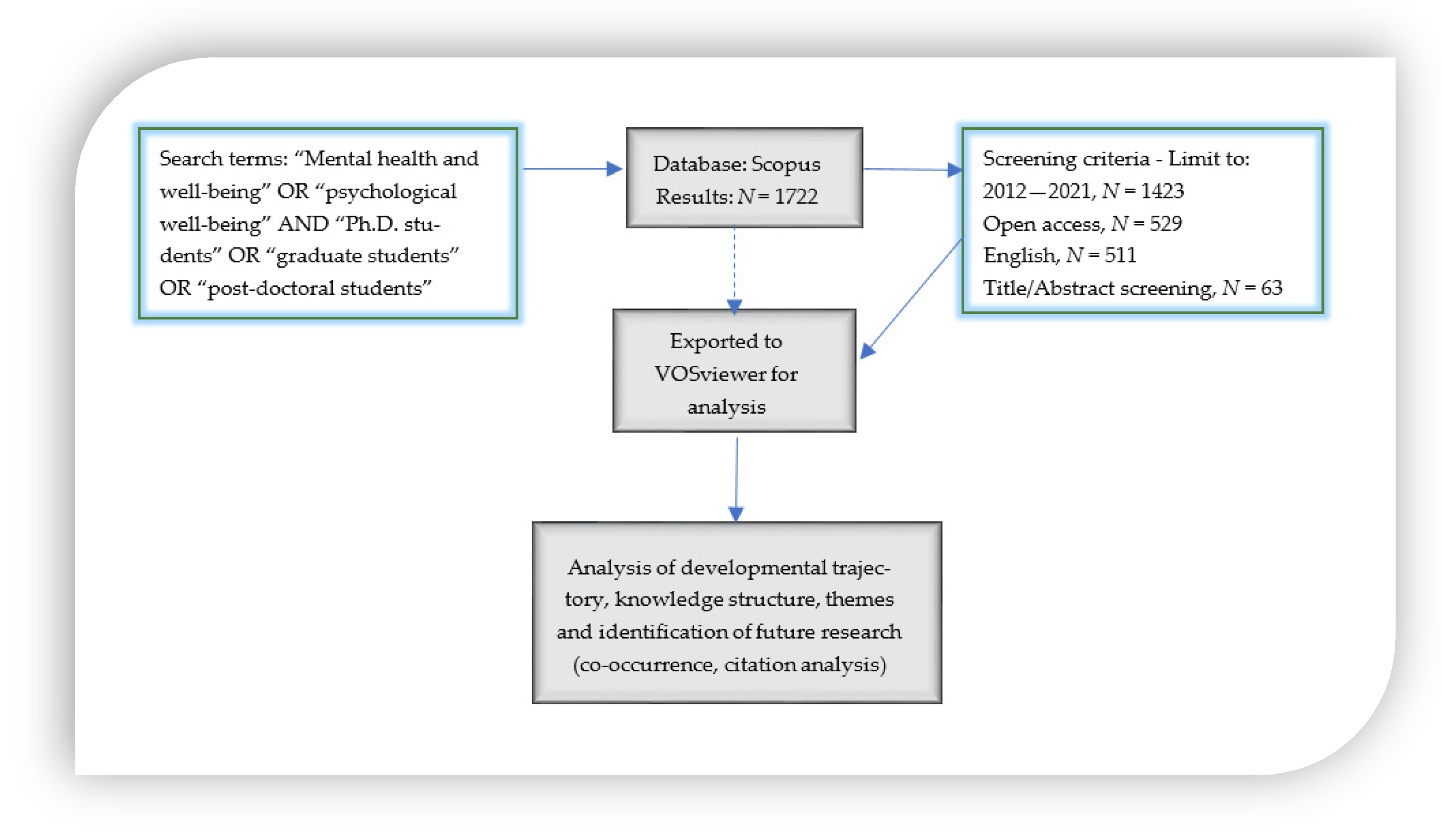
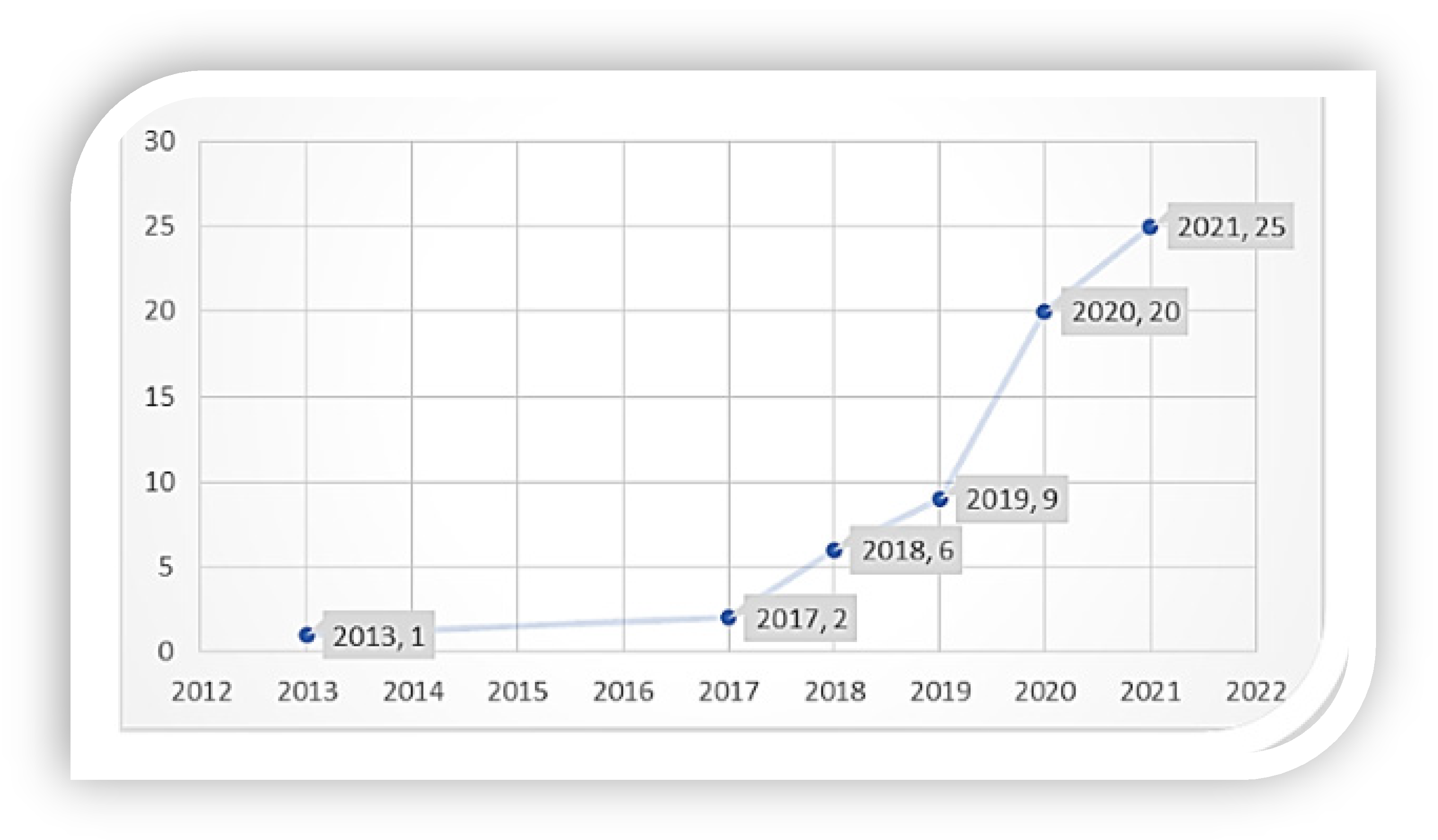
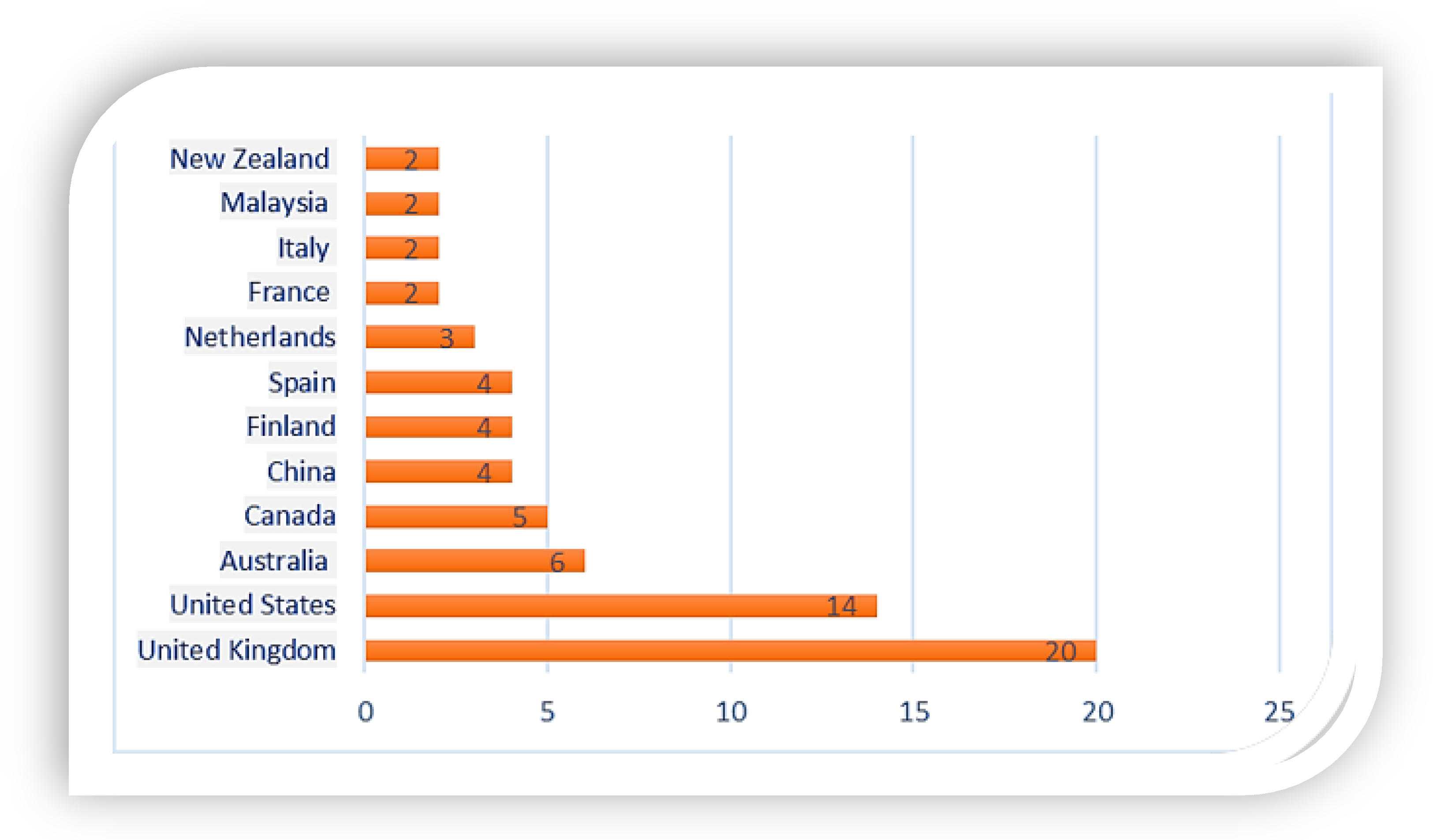
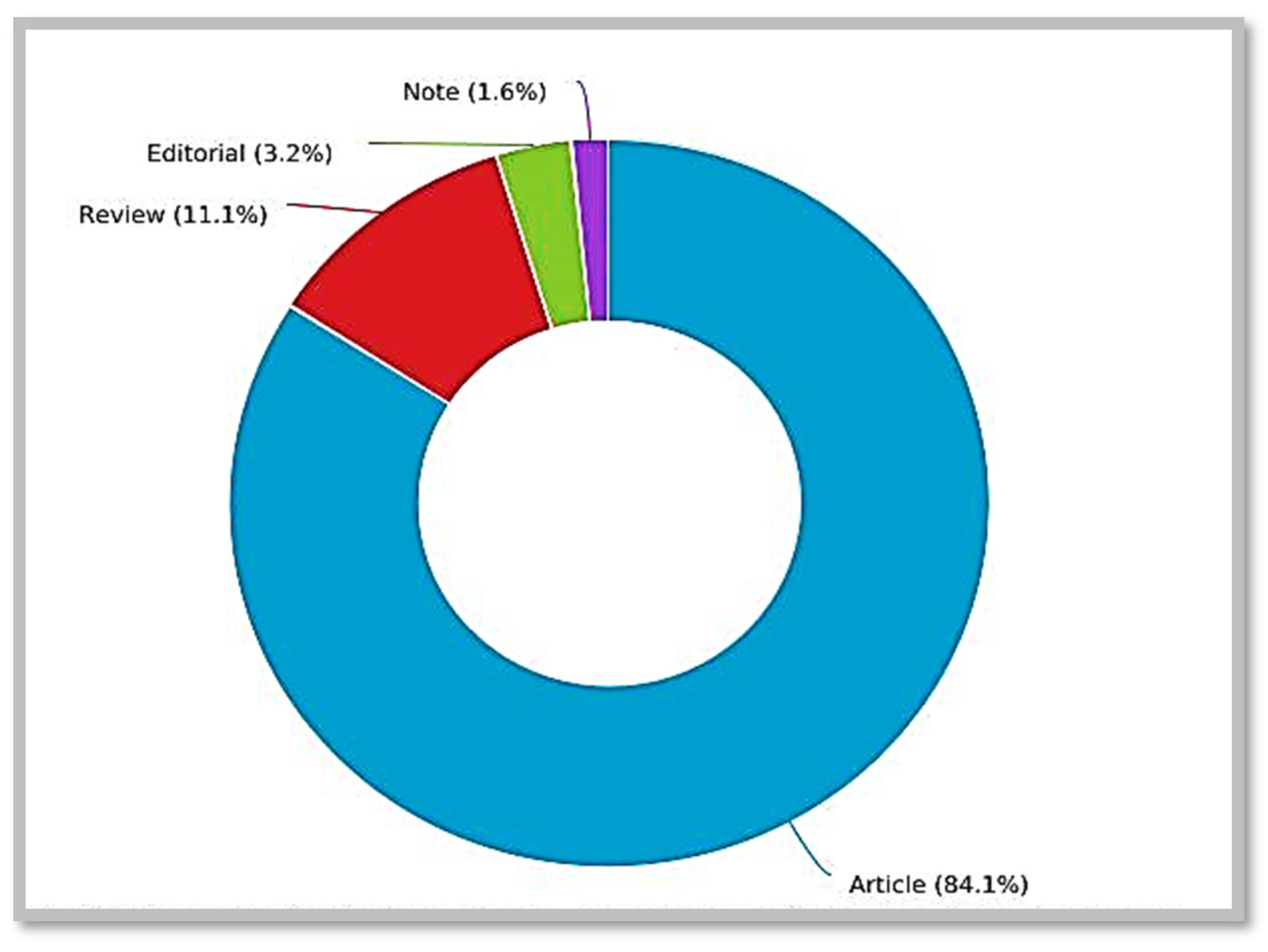
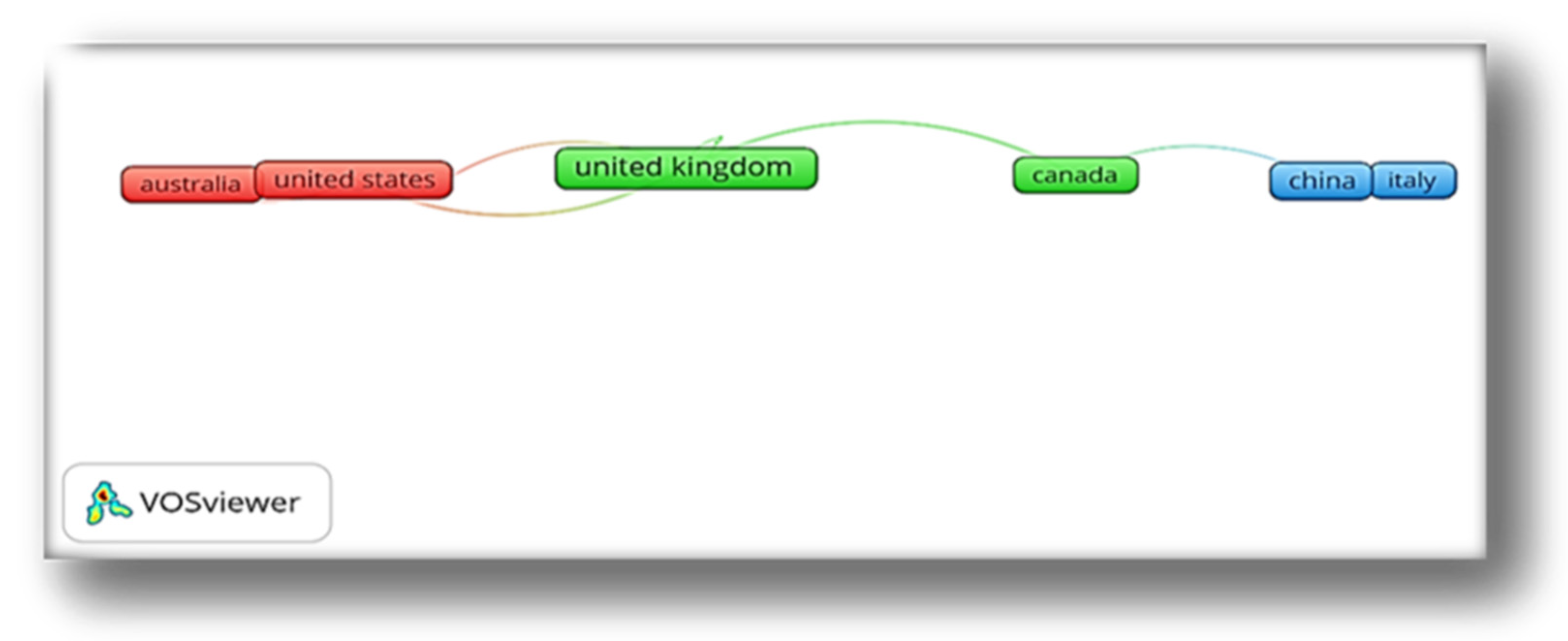
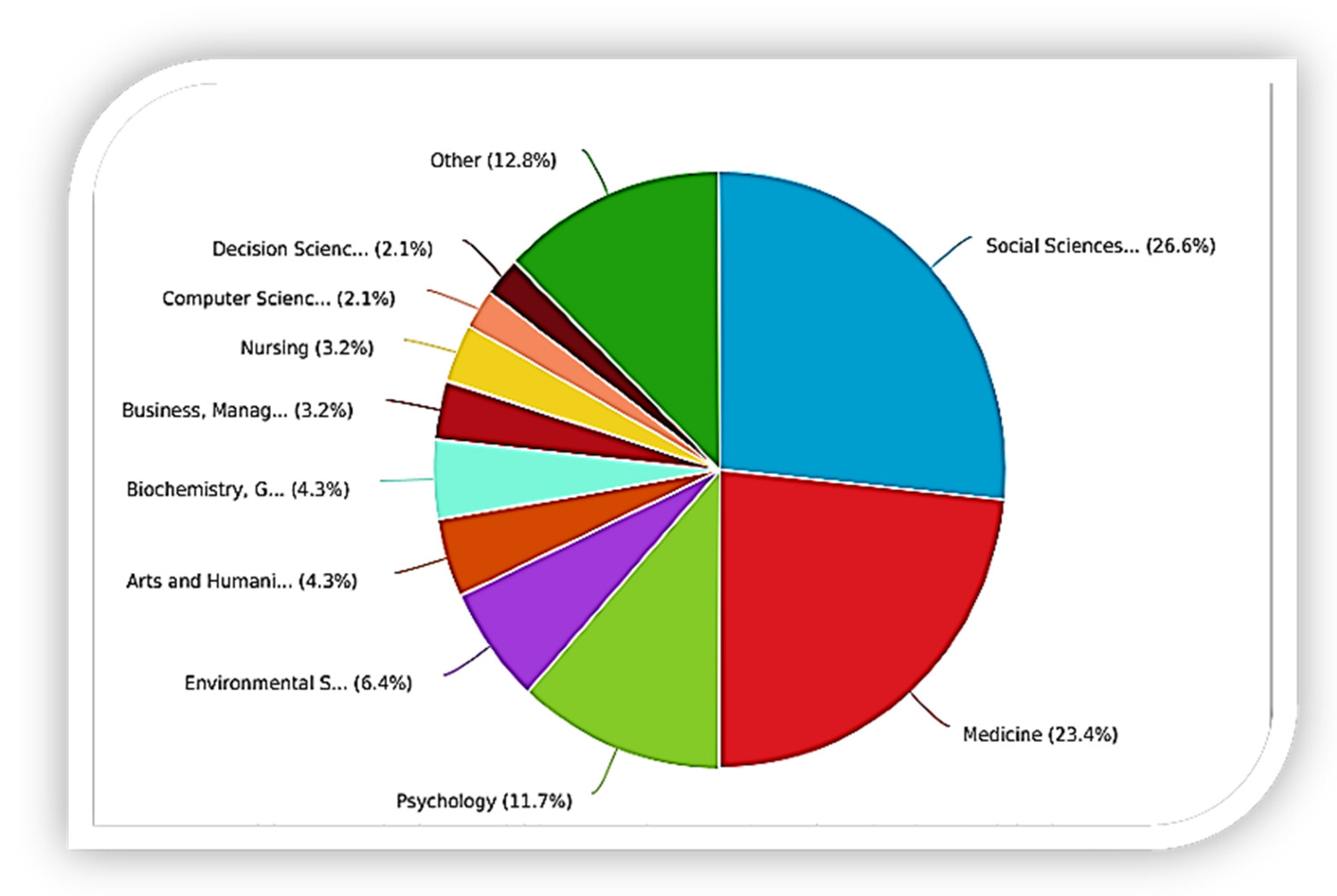
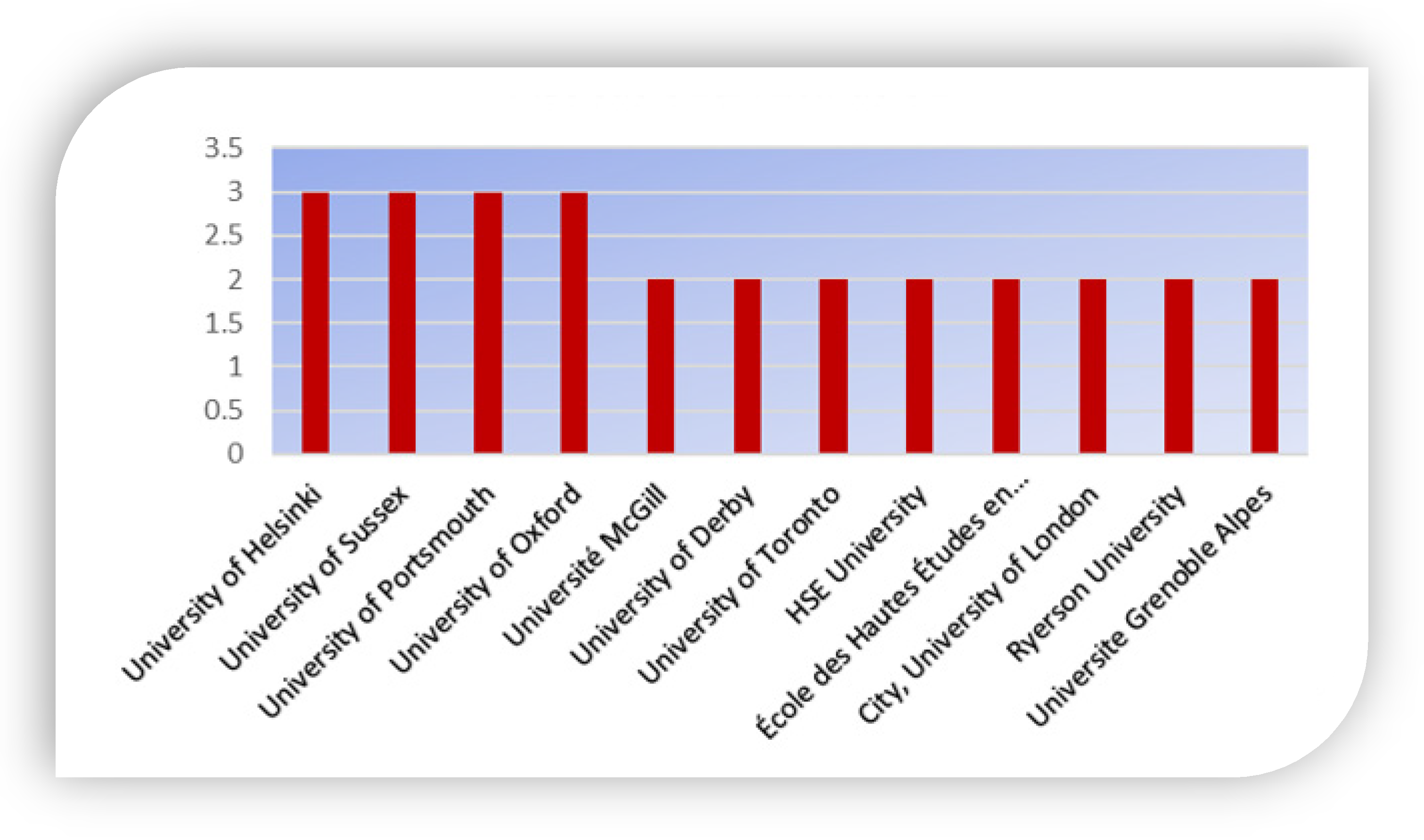

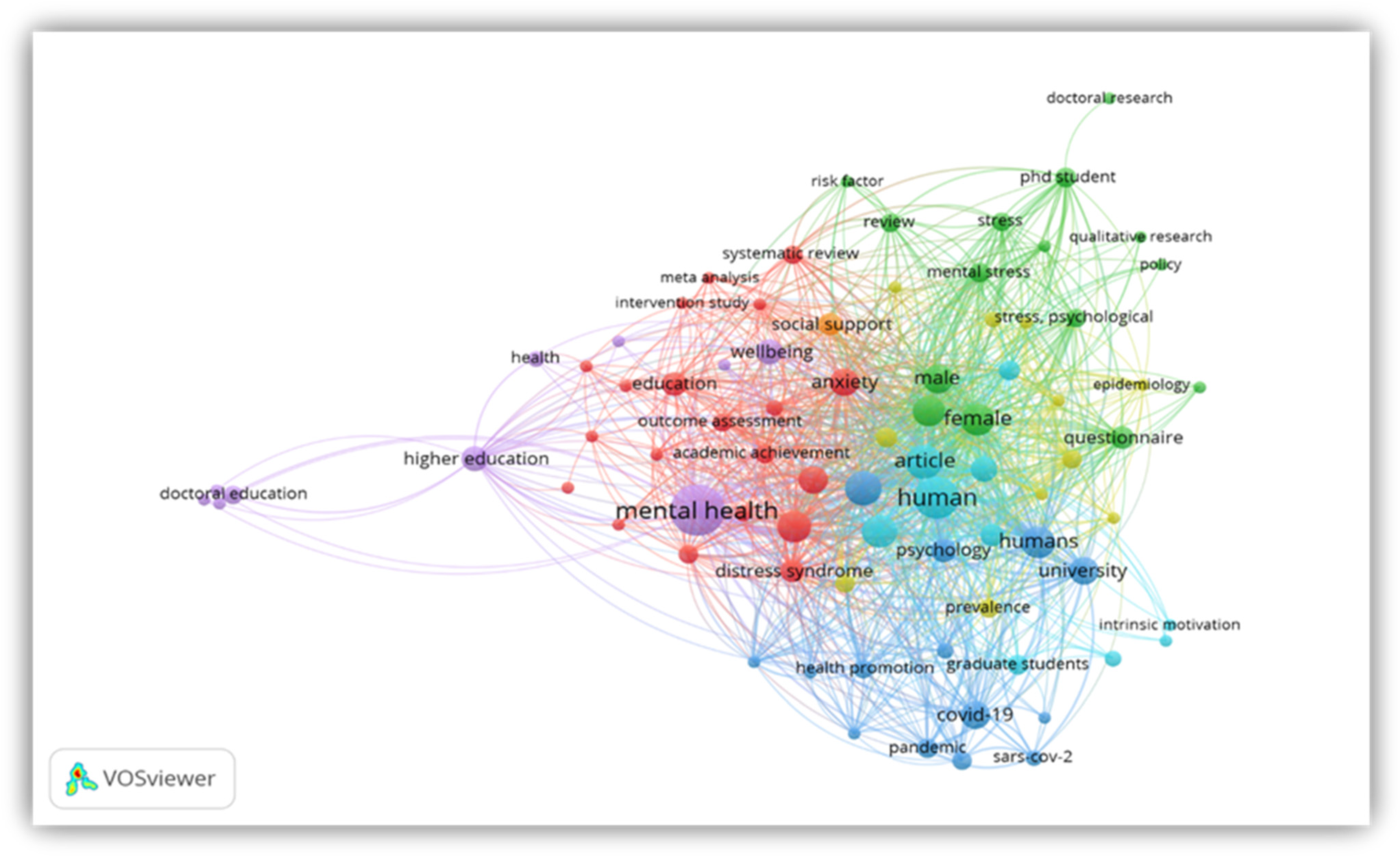
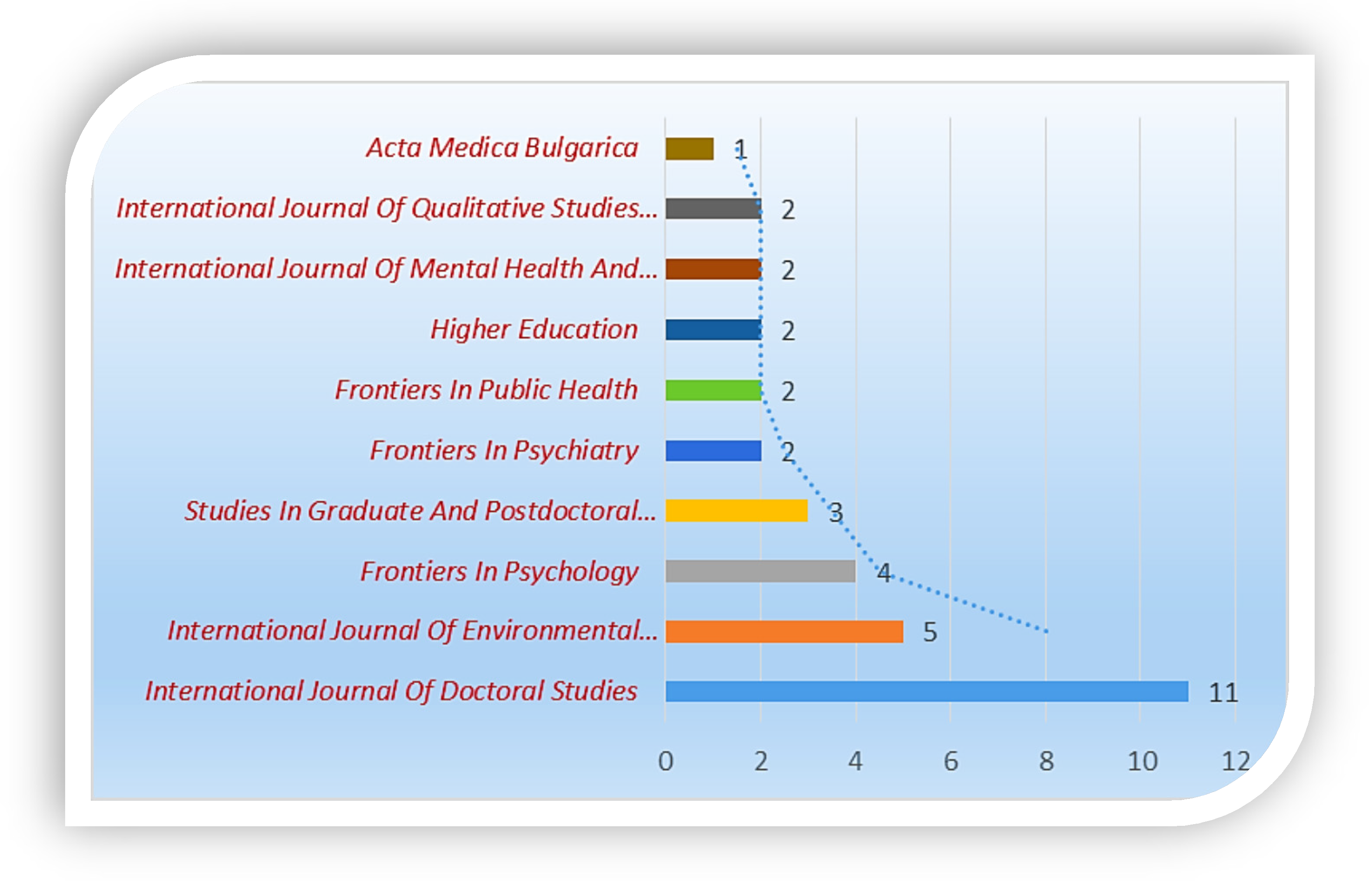
| Publication Year | Document Title | Journal Title | <2017 | 2017 | 2018 | 2019 | 2020 | 2021 | Total Citation |
|---|---|---|---|---|---|---|---|---|---|
| 7 | 11 | 30 | 91 | 142 | 213 | 494 | |||
| 2017 | “Work organization and mental health problems in Ph.D. students” | Research Policy | 0 | 4 | 24 | 54 | 77 | 102 | 261 |
| 2018 | “The Ph.D. experience: A review of the factors influencing doctoral students’ completion, achievement, and well-being” | International Journal of Doctoral Studies | 0 | 0 | 0 | 12 | 23 | 39 | 74 |
| 2018 | “Doctoral students’ well-being: a literature review” | International Journal of Qualitative Studies on Health and Well-being | 0 | 0 | 0 | 5 | 17 | 19 | 41 |
| 2013 | “Experiences of disengagement—A study of doctoral students in the behavioral sciences” | International Journal of Doctoral Studies | 7 | 7 | 4 | 8 | 3 | 2 | 31 |
| 2018 | “A survey and a positive psychology intervention on French Ph.D. student well-being” | International Journal of Doctoral Studies | 0 | 0 | 0 | 5 | 5 | 14 | 24 |
| 2018 | “Effects of mental health interventions for students in higher education are sustainable over time: A systematic review and meta-analysis of randomized controlled trials” | PeerJ | 0 | 0 | 2 | 2 | 9 | 10 | 23 |
| 2021 | “Mental Health Status, Anxiety, and Depression Levels of Bangladeshi University Students During the COVID-19 Pandemic” | International Journal of Mental Health and Addiction | 0 | 0 | 0 | 0 | 0 | 11 | 11 |
| 2019 | “A comparative study of mental health and well-being among UK students on professional degree programmes” | Journal of Further and Higher Education | 0 | 0 | 0 | 1 | 4 | 5 | 10 |
| 2017 | “Psychological Well-being among Postgraduate Students” | Acta Medica Bulgarica | 0 | 0 | 0 | 4 | 3 | 3 | 10 |
| 2020 | “Promoting Mental Health and Psychological Thriving in University Students: A Randomized Controlled Trial of Three Well-Being Interventions” | Frontiers in Psychiatry | 0 | 0 | 0 | 0 | 1 | 8 | 9 |
Publisher’s Note: MDPI stays neutral with regard to jurisdictional claims in published maps and institutional affiliations. |
© 2022 by the authors. Licensee MDPI, Basel, Switzerland. This article is an open access article distributed under the terms and conditions of the Creative Commons Attribution (CC BY) license (https://creativecommons.org/licenses/by/4.0/).
Share and Cite
Okoro, C.; Owojori, O.M.; Umeokafor, N. The Developmental Trajectory of a Decade of Research on Mental Health and Well-Being amongst Graduate Students: A Bibliometric Analysis. Int. J. Environ. Res. Public Health 2022, 19, 4929. https://doi.org/10.3390/ijerph19094929
Okoro C, Owojori OM, Umeokafor N. The Developmental Trajectory of a Decade of Research on Mental Health and Well-Being amongst Graduate Students: A Bibliometric Analysis. International Journal of Environmental Research and Public Health. 2022; 19(9):4929. https://doi.org/10.3390/ijerph19094929
Chicago/Turabian StyleOkoro, Chioma, Oluwatobi Mary Owojori, and Nnedinma Umeokafor. 2022. "The Developmental Trajectory of a Decade of Research on Mental Health and Well-Being amongst Graduate Students: A Bibliometric Analysis" International Journal of Environmental Research and Public Health 19, no. 9: 4929. https://doi.org/10.3390/ijerph19094929
APA StyleOkoro, C., Owojori, O. M., & Umeokafor, N. (2022). The Developmental Trajectory of a Decade of Research on Mental Health and Well-Being amongst Graduate Students: A Bibliometric Analysis. International Journal of Environmental Research and Public Health, 19(9), 4929. https://doi.org/10.3390/ijerph19094929








